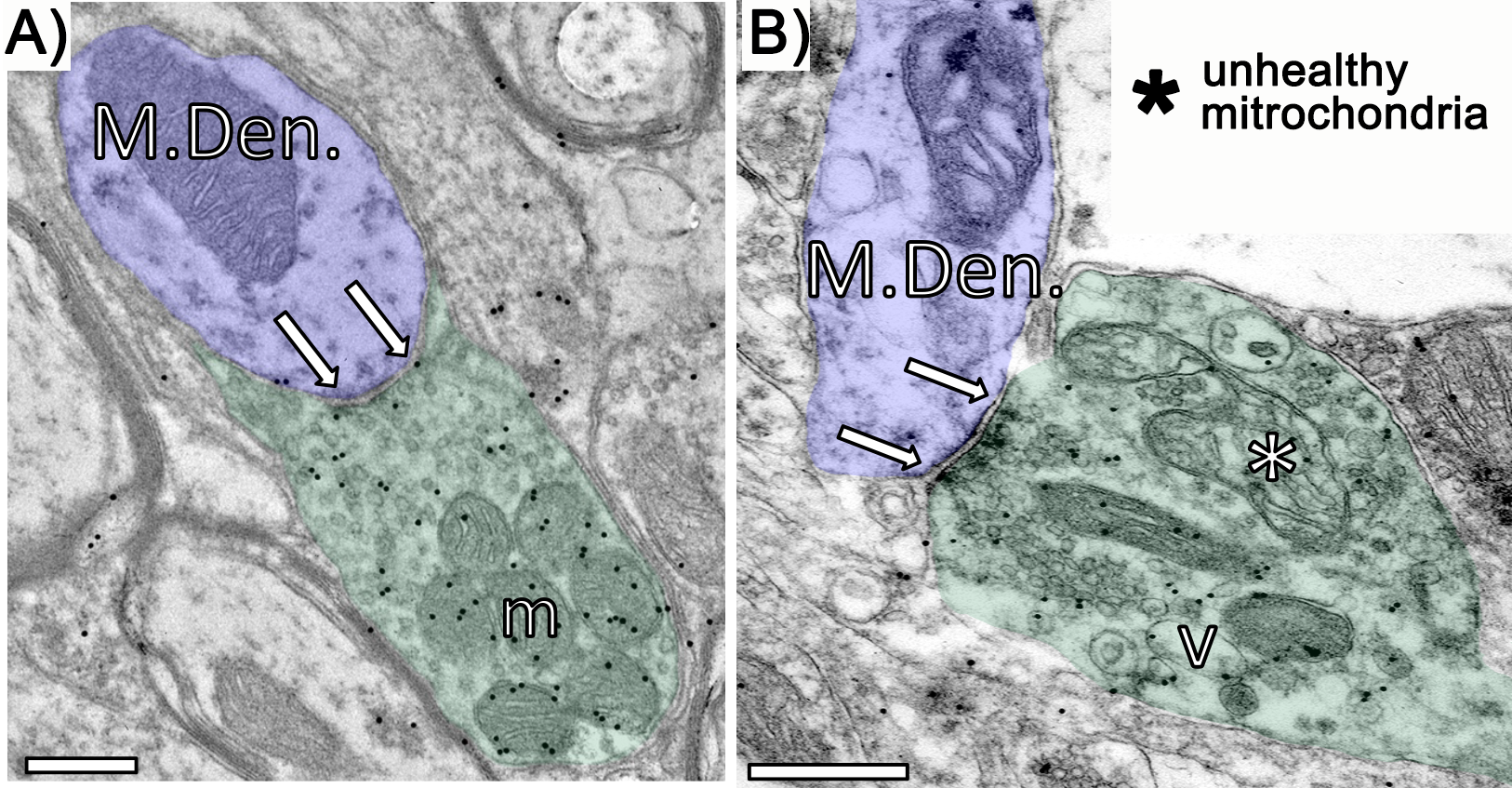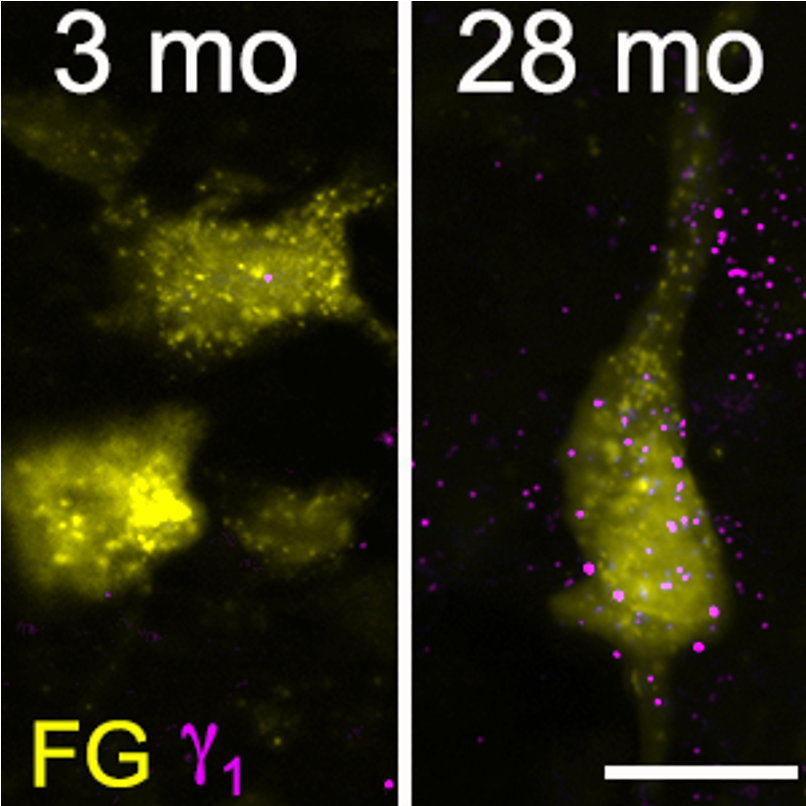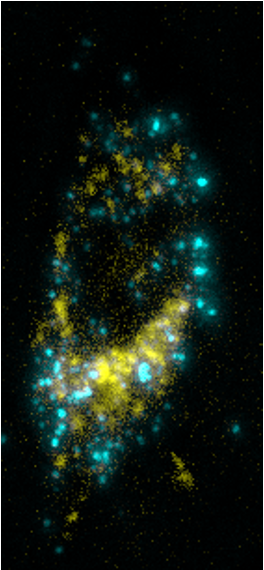What ultrastructural changes are occurring to GABAergic synapses in the auditory midbrain before age-related hearing loss occurs? It has been well documented that GABA is downregulated in the inferior colliculus with age. While the effects of this lost GABA are becoming understood at older ages, we have very little information regarding what GABAergic changes occur during middle ages when hearing is typically unaffected by aging. We are seeking to determine whether age-related changes to GABAergic synapses are occurring before deficits to temporal processing and hearing thresholds. To answer these questions we use a number of techniques (immunogold transmission electron microscopy, prepulse inhibition of the acoustic startle reflex, envelope frequency following responses, auditory brainstem response) across several age groups: To the right is an electron micrograph showing a young GABAergic synapse (bracketed by the arrows; green = presynaptic bouton; blue = postsynaptic target) onto medium sized dendrites at young (A) and old (B). In aged tissue, we also find that mitochondrial cristae are often swollen and that the mitochondria are distorted and appear unhealthy.







